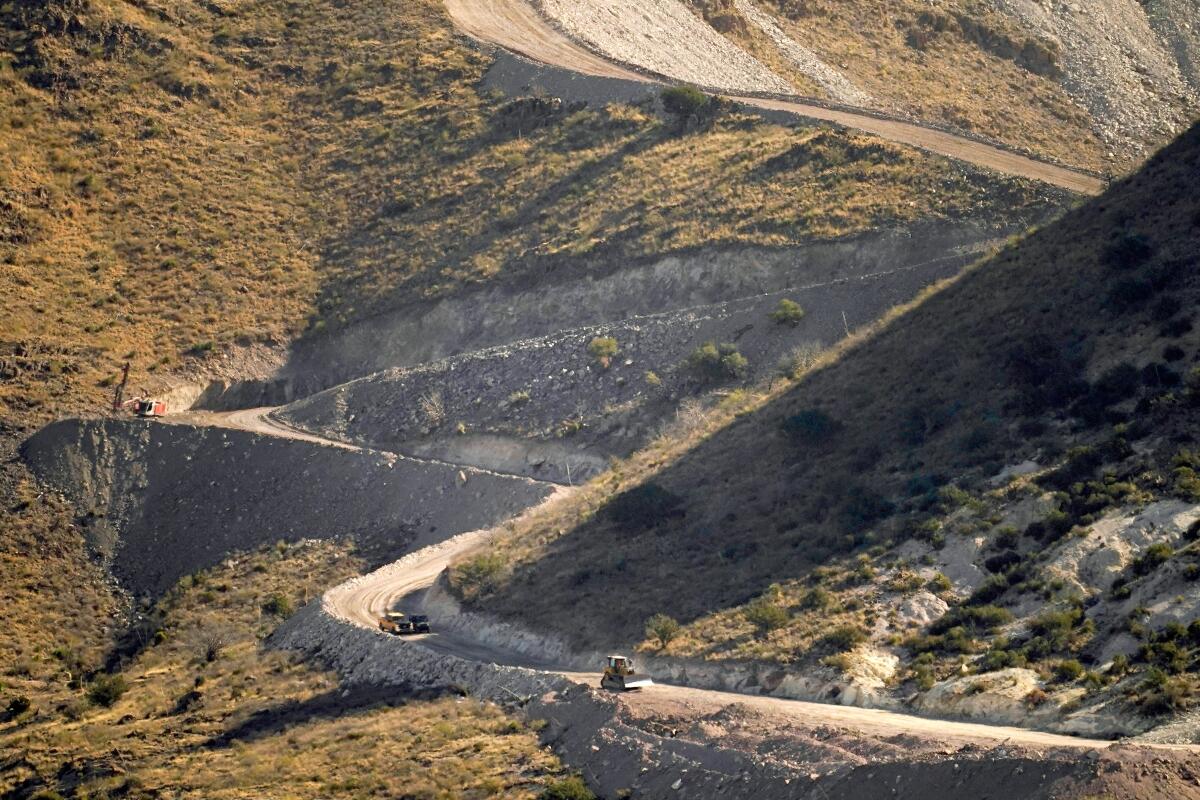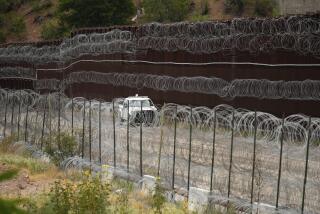Editorial: It’s Biden’s border wall now. Here’s how he should handle it

The notion of a barrier along parts of the 2,000-mile U.S.-Mexico border did not, of course, begin with Donald J. Trump, but his quest for a “big, beautiful wall” to be paid for by Mexico made the border barricade both a hallmark and a benchmark of his presidency.
In the end, Trump spent about $15 billion in U.S. taxpayers’ money to extend the wall 47 miles, while adding a second layer along an additional 33 miles (plus replacing about 370 miles of existing barriers), calling it “a great achievement, the extraordinarily successful building of the wall on the southern border.” The emperor not only had no clothes, he apparently had pretty lousy eyesight, too.
President Biden has rightly ordered a freeze on further wall construction until his administration can sort things out; among other steps, it will review contracts and eminent domain actions to seize private land (mostly in Texas) to build the wall on. That pause ought to go even deeper to reassess not only the wall Trump built but also its predecessors, and to determine whether there might be smarter, more effective and more humane ways to secure the border and deter illegal immigration.
That reckoning must begin by recognizing that, generally speaking, most border walls aren’t very good at what they’re supposed to do — stopping people — but can be very good at what they shouldn’t do — interfering with the natural movement of wildlife, streams and rivers.
Though it’s true that a border barrier might temporarily thwart or slow illicit crossers, where there is a will, there is a way. Ladders. Ropes. Tunnels. Cutting torches. People will persevere, even if it means traveling deep into the desert to unbarricaded stretches, a decision that often has disastrous results — the hundreds of migrants’ bodies found each year in the desert border region hint at the scale of the circumvention.
People crossing the southern border without permission aren’t always trying to sneak in. In recent years, a large portion of them have been families seeking to turn themselves in and ask for asylum. And broadly, most people who wind up living in the U.S. without permission came in legally, with visas, but then didn’t leave when they were supposed to.
What about contraband? The vast majority of it comes through legal points of entry hidden in motor vehicles. Besides, walls don’t stop drones, planes and boats.
The Trump administration rushed through its fence-replacement and wall-building program by using a section of the 2005 Real ID Act that empowers the head of the Department of Homeland Security “to waive all legal requirements” the secretary “determines necessary to ensure expeditious construction of the barriers and roads” at the border.
That allowed the administration to suspend 84 separate laws and regulations and proceed without considering the damage it was causing to the environment, to sacred tribal lands, to habitats for endangered species — or to the species themselves.
An analysis by the Sierra Club and other conservation groups details specific areas in which walls have damaged or threatened the environment and affected the movement of Peninsular bighorn sheep, jaguars and Mexican wolves, as well as the flow of water to sensitive seasonal habitats and feeding areas for both permanent and migratory birds.
Biden took the right initial steps in unscrambling the complicated factors that lead tens of thousands of people to flee Central America, many of them hoping to land in the U.S. He has announced plans to work with Congress on sweeping federal aid programs aimed at shoring up civil institutions in Guatemala, Honduras and El Salvador, stabilizing their economies and giving people reason to dream of a better future for themselves in their home countries.
But the headwinds are strong, including powerful gangs that control and terrorize neighborhoods with impunity, corruption within the governments the U.S. hopes to help, and the effects of climate change on agriculture, leaving people jobless and starving.
And many people seek to slip in without permission because, under complicated formulas and rules, the numbers of visas granted each year per country are limited. Globally, the U.S. will make available 226,000 visas under a range of family-reunification categories; there are more than 3.7 million people on the waiting list. Figuring out a better way to allocate and issue such visas would reduce one of the motivations for trying to enter illegally.
But those are separate issues from the border wall and what ought to be done with it. The nation needs a balanced assessment of where barriers serve a practical purpose and where they don’t, where they are environmentally safe and where they are not, and whether compensation is due to people damaged by Trump’s foolishness.
More to Read
Updates
8:41 a.m. Feb. 7, 2021: This editorial has been updated to provide fuller context for the scope of wall construction under the Trump administration.
A cure for the common opinion
Get thought-provoking perspectives with our weekly newsletter.
You may occasionally receive promotional content from the Los Angeles Times.










